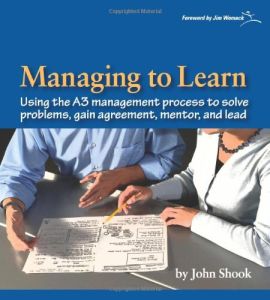Join getAbstract to access the summary!

Join getAbstract to access the summary!
John Shook
Managing to Learn
Using the A3 Management Process to Solve Problems, Gain Agreement, Mentor and Lead
Lean Enterprise Institute, 2008
What's inside?
Learn and impose the A3 management process to solve hard-to-tackle problems.
Recommendation
Toyota insider John Shook invites you to be a detective, artist and business analyst with this crisp text that unfolds A3 management thinking in an illustrated narrative. Whether you regard A3 as a process, a methodology or simply the creative use of a large piece of paper, Shook pulls you into rigorous problem solving. This serious process that helps many companies shine in manufacturing excellence lets you, in part, feel like a five-year-old again as you dig deeper and keep asking “Why? Why? Why?” until you hit the “root cause” of your business problem. getAbstract recommends Shook’s easily applied (if you think about your results as you work through it) manual to all engineers, managers, mentors and total quality coaches seeking to understand problem solving through a lean-manufacturing lens.
Summary
About the Author
An industrial anthropologist who focuses on lean production principles, John Shook is a former manager at Toyota.

















Comment on this summary